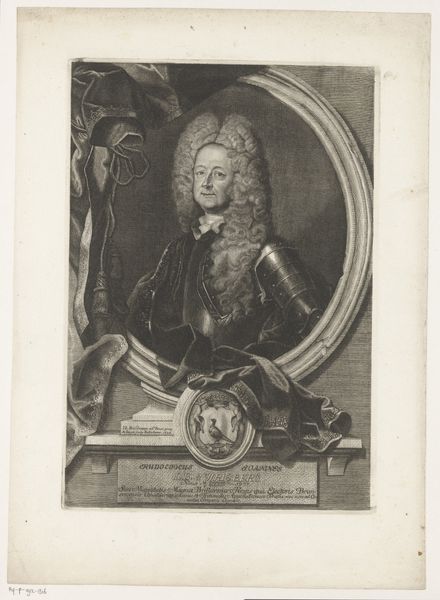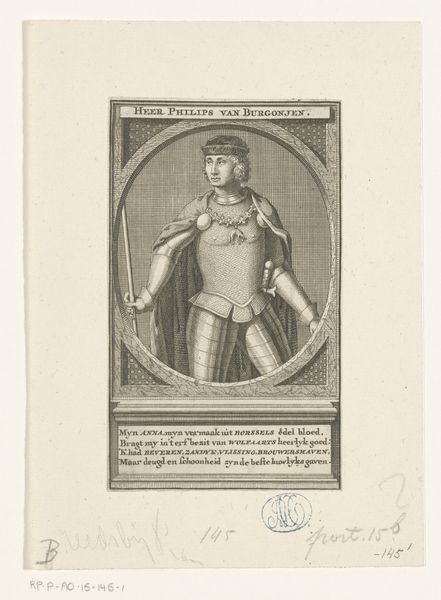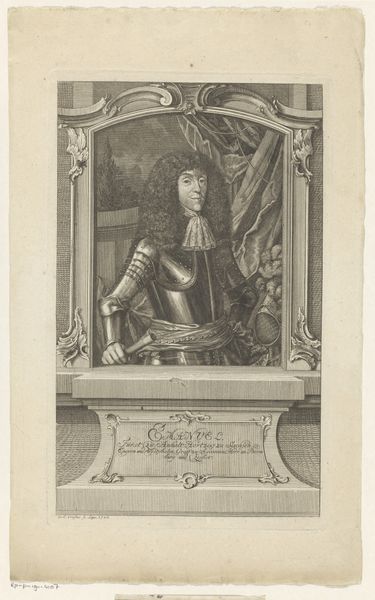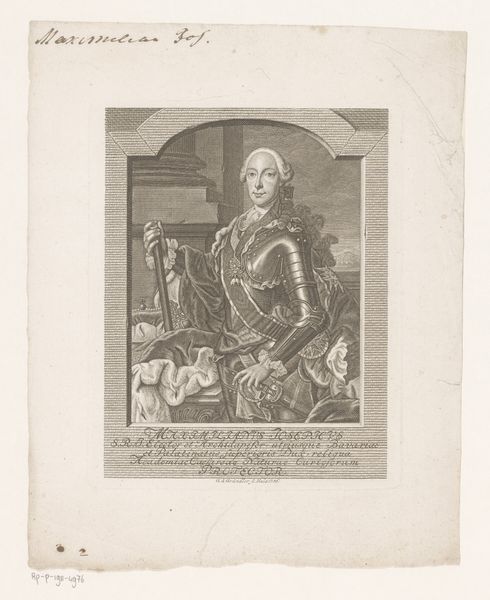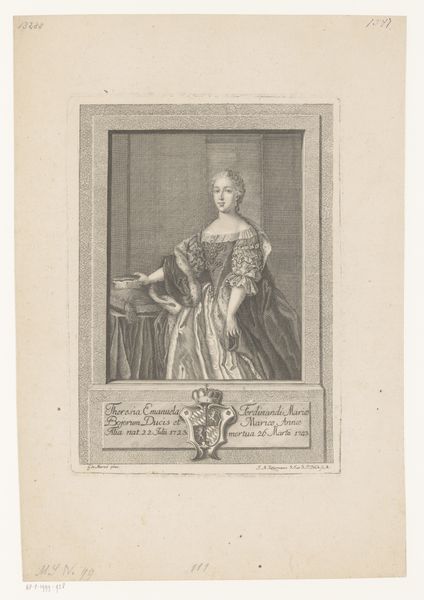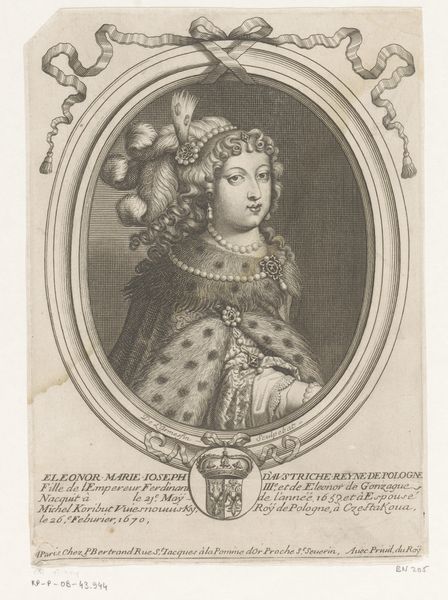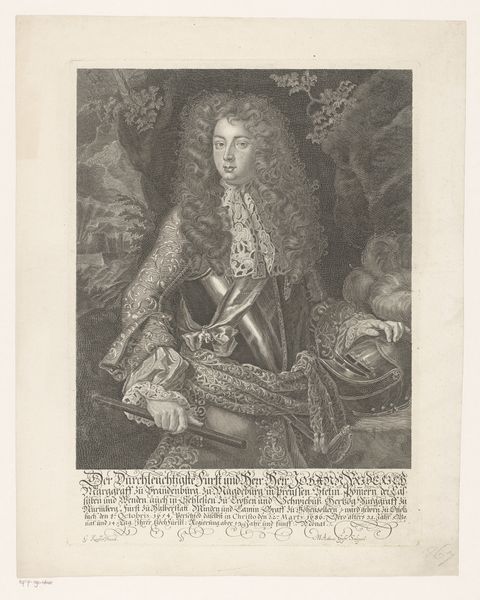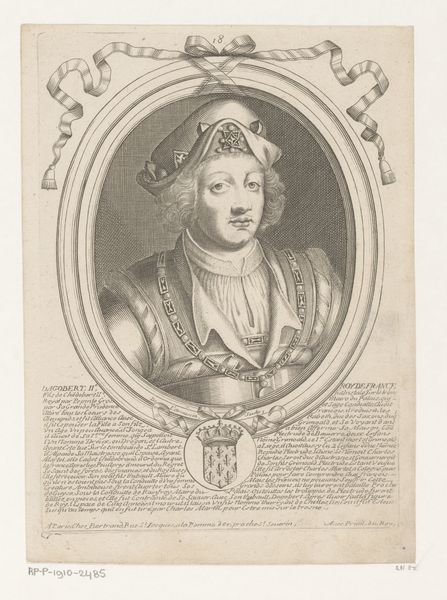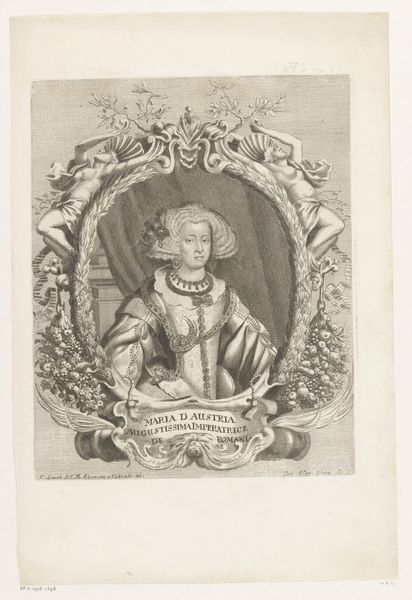
Dimensions: height 282 mm, width 205 mm
Copyright: Rijks Museum: Open Domain
Editor: This is a print from 1773, "Portret van Willem V van Holland" by Joseph Anton Zimmermann. The details are amazing; it looks like an old engraving style. What strikes me most is the weight of history in the piece. How do you interpret this portrait? Curator: What I immediately notice is the fascinating juxtaposition of regalia and the setting. Look at Willem V's feathered hat, the ornate details on his coat, his stance with the baton… Yet, he’s framed, almost imprisoned, by what seems like a simple window frame. Does it signal something of the times? Editor: That's an interesting observation. I hadn’t thought of it as imprisonment. Is the window frame symbolic? Curator: Precisely. The window could be a visual metaphor for the constraints on his power, the rising tide of republican sentiment, the way he may have felt observed, even trapped by tradition and expectation. He stands between us and... what? Is it an interior, a symbol of interiority perhaps, reflecting a personal struggle amidst external pressures? Consider too how cultural memory persists: rulers used specific symbols and images to project authority and connect themselves with earlier rulers and earlier ideas about leadership, duty, or divine right. Editor: So, the portrait isn't just a likeness but also a careful arrangement of symbols, hinting at his internal conflicts and the political atmosphere? Curator: Exactly. The clothing signals status but also could suggest a desire for splendor that’s being undermined, that he *should* wear the regalia because of an obligation or expectation. How do these small semiotic signifiers function? These historical portrayals speak volumes if you can 'read' them, a fascinating game for modern observers! Editor: It’s interesting to see it that way; looking for all the possible symbolic elements changes the entire viewing experience. Curator: Indeed, portraits from this period aren't simply documentation; they're crafted statements intended to convey very specific messages and spark the cultural memory within its audience. Now when we examine this art, we, as viewers, decode those messages, often uncovering details beyond a superficial observation.
Comments
No comments
Be the first to comment and join the conversation on the ultimate creative platform.

